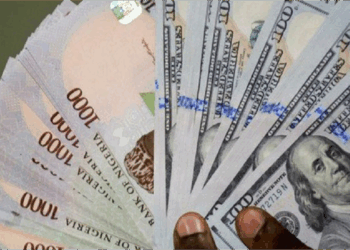Currency held outside Nigeria’s banking system declined for the second time in 2025, falling to N4.57 trillion in April from N4.60 trillion in March, according to new data from the Central Bank of Nigeria (CBN).
This renewed decline comes amid the apex bank’s continued hold on its benchmark Monetary Policy Rate (MPR) at 27.5%, a decision made during its May 2025 Monetary Policy Committee (MPC) meeting.
Although the April figure still represents a 26.8% year-on-year rise compared to the N3.61 trillion recorded in April 2024, the month-on-month decline of N26.4 billion is marginally significant.
It marks a return to the downward path seen earlier in the year and reinforces subtle shifts in Nigeria’s cash management dynamics, possibly in response to monetary tightening and increasing adoption of digital financial channels.
Four months of softening cash levels
The downturn in currency outside banks began following the December 2024 festive season, when the figure peaked at N5.13 trillion, the highest level recorded ever. This seasonal surge, typical for year-end transactions, was quickly followed by a sharp decline in January 2025 to N4.74 trillion.
- February saw the steepest drop in the year so far, falling to N4.52 trillion, as post-holiday spending waned and monetary controls took firmer hold.
- March brought a temporary reversal, with currency outside banks ticking up slightly to N4.60 trillion.
- But by April, that rebound had reversed, and the total fell again to N4.57 trillion.
- The April decline is especially relevant because it suggests the March rise was transitory rather than a shift in trend.
- From December to April, currency outside banks has declined by N555 billion or 10.8%, a strong indication that the central bank’s liquidity management tools are biting, particularly in taming excess cash within the informal economy.
Subtle shift in currency composition emerges
- While the amount of currency outside banks is rising year-on-year, the composition of cash within the financial system is gradually changing. In April 2025, the total currency in circulation stood at N5.01 trillion, of which N4.57 trillion, or 91.1%, was outside banks.
- This is down from 91.9% in March 2025, and also slightly lower than the 91.9% recorded in April 2024, despite the higher overall volume of cash in the system.
- Although the shift may appear marginal, it is directionally significant. The percentage of cash residing within deposit money banks has increased, however slightly, suggesting that efforts to promote financial intermediation may be yielding early results.
- The implication is that more Nigerians are either depositing cash into the formal banking system or shifting to non-cash alternatives such as mobile money, point-of-sale (PoS) channels, or electronic transfers. Even with over 91% of total cash still outside the banking system, the data signals the beginnings of behavioural change, one that could support the CBN’s broader digital financial inclusion goals.
What you should know
The decline in cash held outside the formal banking system appears to align with this cooling inflation trend. As money growth slows and excess liquidity is reined in, demand-side pressures could subside further, allowing the CBN to maintain its hawkish stance without additional tightening for now.
The reduced availability of physical cash, especially outside the banking system, may also reflect the public’s sensitivity to interest rate conditions and the rising cost of cash-based transactions.
Still, challenges remain. The dominance of cash outside banks, over 91%, is still one of the highest globally and poses a real hurdle to monetary policy effectiveness, fiscal traceability, and anti-corruption enforcement. Unless this number continues to trend downward over several quarters, its policy significance remains limited.





















